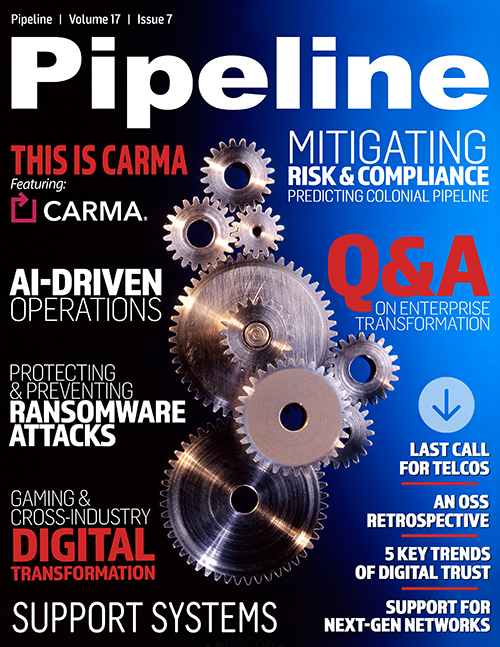The Fundamental OSS Challenges of Yesterday, Today and Tomorrow
Effectively managing virtualized network elements
Network function virtualization (NFV) is proceeding in CSPs with software-based virtual network elements (running on data center hardware) replacing hardware solutions, but only slowly. In contrast, in enterprise data center routing, virtual routers already constitute over half the market. The cost and management complexity of the computing and storage infrastructure has slowed deployment in CSP networks, but good solutions are now available from companies like HPE, Red Hat, and VMWare. However, the majority of the VNFs are still being managed as virtual boxes as before, with little use of the full potential of the technology. These need to be tied into the new software-controlled networking technologies to reach their potential to create an elastic network, automatically adding new network capacity at the right time at the right place.
Implementing software-controlled networks
Command line and other manual interfaces to network elements (whether virtual or physical) still are state-of-the-art for many CSPs in many technology areas. However, certain areas, such as SD-WAN, are rapidly incorporating software control. In SD-WAN, enterprise customers have portals with information and direct control over most of the resources that support their service. But this needs to be spread among the other network technical areas with sets of more sophisticated domain controllers and cross-domain orchestration systems.
Securing the network, services, and devices
Security of the network and computing and storage resources themselves as well as the services riding on them and the premises equipment attached (IoT devices, in particular) has become a major concern among leading-edge companies as workspaces have radically distributed due to the necessity to work at home. Today, security is implemented more as an add-on, or even afterthought, than an intrinsic part of most network operations. This needs to change.
Supporting complex network slicing
Network slicing, where parts of the shared network are dedicated to specific customers, services, or QoS guarantees, must be done end-to-end in the engineering, provisioning, and management of the network. This requires that all the OSSs be coordinated across all the technological, geographic, and organizational domains. This is not only a technical but also a planning, operational, and budgetary issue for OSS.
Evolving to autonomous networks
Various groups are defining what the autonomous networks of the future will be, when they are virtualized to the greatest extent, put under software control, and controlled via ubiquitous artificial intelligence. Besides the problem of the sheer magnitude of implementing this vision across the entire network, there is a fundamental problem in trusting the actions of the AIs. Individual AIs themselves can determine what to do but are incapable of explaining why they choose that course of action. Explanation AI (XAI) technology that will solve this problem is in its infancy. And even if individual AIs work well in their individual domains, the autonomous network requires multiple interacting AIs in their various domains, with their differing goals. Some ring-fencing of their cooperative, global actions is needed to prevent black swan events. Also, probably sandbox simulations on digital twins of the network will be required to check on the efficacy and advisability of the recommended actions. Much work is needed here.
The path behind and journey ahead
Since the beginning of the century, significant progress has been made in OSS technology and functionality. But much more is needed as we move to autonomous, intent-based networking. And as the communications infrastructure is merged into the computing and storage infrastructure, new management challenges will present themselves. It has been, and is going to be, an interesting ride.



















